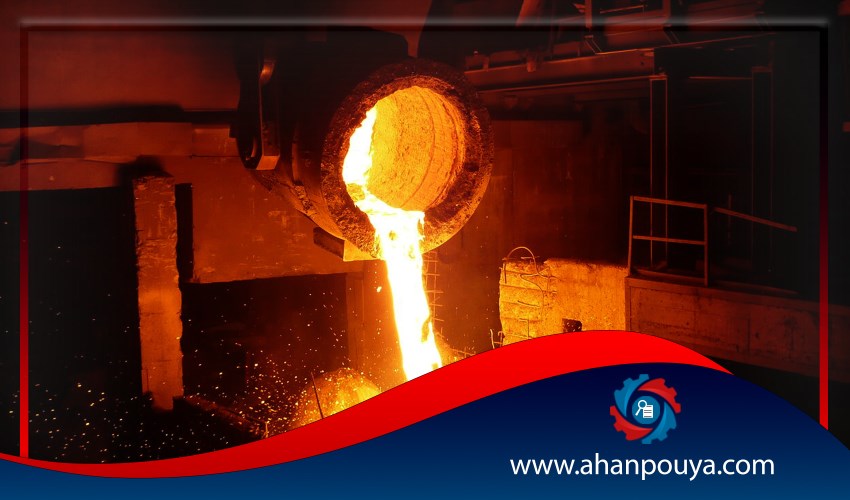
The definition “ Metallurgy is one of the oldest arts and one of the newest sciences “ shows the history of metallurgy well . From the time the human recognized the metal , he learned metallurgy as an art . Science of metals , extraction metals and working on them is called Metallurgy . It includes separation of minerals of ores , melting , purification and creating billets , improving properties and making alloys and working on metals and shaping them .
Metallurgy consists of two Greek words metal ( meaning phase ) and ourgein ( meaning working ) . It is important to note that even many experts have written the name “ Metallugy “ which is totally incorrect according to the root of the word . The origin of this error is probably the wrong analogy that some make in their mind .
Since physiology , radiology , biology and hundreds of other scientific fields ends with “ logy“ , they assume that this scientific field should also be “ metallugy “.
Metallurgy , as a science , is relatively young so that it is not very long time that metals are observed scientifically . In spite of all this , though metallurgy is one of the newest sciences it is one of the oldest techniques . In the history of metallurgy , archaeological evidences suggests that residents of the Iranian plateau were the first whom discovered and used metals .
Taking into account this long - standing record , as well as the growing role of metals in human life and the existence of numerous mines in our country , metallurgy practitioners need to be able to identify as much as they do and raise the level of scientific and technological information in this field .
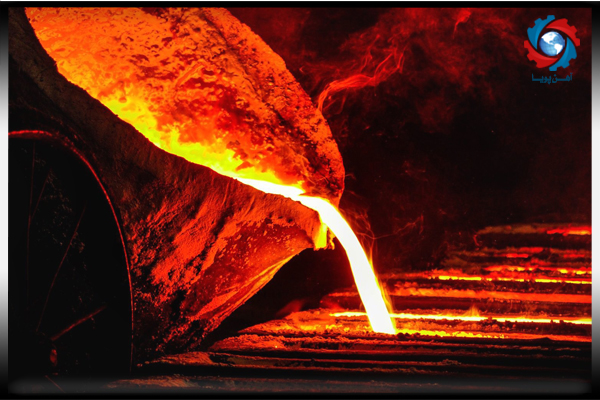
Today's use of metals is the result of a long and extensive effort that started thousands of years ago . Metal age was after the Stone age and has begun from about 8000 years ago . Copper seems to be the first metal used in organic , pure and natural form , separated from minerals . Looking at different kinds of copper ores , we will see that they have a metallic appearance with colors of azure , green , gold and red . This could be one of the reasons why early human noticed about compounds containing copper .
Moreover , because copper is found pure in nature and has good ductility , it is among the first metals that have attracted man . Some scientists also believe that the first time , bright golden particles of gold that was scattered around the rivers , attracted man and invited him to the infinite world of metals .
Egyptians and perhaps Indians have had more success than any other in in extracting gold from its stones .
In Iran , from achaemenid period , numerous works of gold and silver were discovered especially along the Amudarya river near Hamedan . By passage of time , tin , silver , lead and antimony were also discovered .
Metal workers have experienced heating , melting and mingling metals and they succeeded in the empirical knowledge about alloys . It is one of the most basic steps in the history of metallurgy to the age of the metal , discovering that metals can be melted and cast in molds in the desired shapes .
One of the other important steps in this regard was to find the possibility of producing metals from minerals containing metals . Metallurgical developments are closely linked to the growth of human civilization .
Bronze alloy was formed by combining tin and copper and the Bronze age began . Production of bronze dates back to 4000 to 1400 BC. Bronze rivaled copper , gold and silver in beauty , its hardship was greater than them , and provided the needs of human to make different devices .
However , both copper and tin are very soft but with their dissolution , the human demand for the production of solid materials was fulfilled . There is obvious evidences that humans get the benefits of using bronze soon .
These evidences include daggers , bayonets , arrows , and horsemanship devices which were found in different parts of the world , relating to the Bronze Age .
Iron is not found in nature free but is found in iron ore . Humans are certainly get familiar with iron in Iron age . A large amount of nickel existing on the surface , is the significant characteristic aspect of Meteorite iron . With the help of different methods , scientists have discovered that many of these fragments are made of iron meteorite iron , by investigating chemical compounds of iron discovered in different parts of the world .
Ancient Egyptians called iron the "heavenly metal" iron . The Assyrians , Babylonians , and Hebrews used to used to make ornaments because of iron was valuable and expensive . In the time of Hammurabi , around 4000 years ago , the price of iron was eight times of silver , equivalent to three quarters of gold . The first case of iron extraction dates back to about 1,300 BC.
In ancient Iran , in the achaemenid period , iron materials were replaced by bronze materials . As at the end of this period , iron weapons were replaced with bronze weapons . The ancients , mixed iron ore with charcoal to make fire . Iron extraction has a much more complicated technique rather than copper extraction ; as reduction of iron requires a much higher temperature which has caused to much slower progress .
In ancient times in Persia , Mesopotamia , Egypt , Greece and Rome collectively seven metals were known and used including : Gold , Silver , Iron , Lead , Tin and Mercury . Bronze which is an alloy of copper and zinc , appeared during the 1200 to 600 BC. This alloy was not correctly known until the establishment of the Roman Empire , which bronze used to make coins . The rise of Bronze industry was one of the most important steps Romans to improve metallurgy .
Antiquities and study of literature showed that the ancient Persians had a significant role in the history of metallurgy and had a significant role in its progress . The following are mentioned in a few cases .
Persians were the first to discover copper and melted metals ( in the Sialk city around current Kashan ) .
Several year ago in an unknown hill called Mamoorin , some metal products and metallic tools were discovered that showed the depth of metallurgy in Persia as well as exporting metal products to different cities of Persia such as Arisman around 3000 years BC.
The ancient site of Arisman is one of the most important metalworking and industrial hubs of ancient Persia , which has already identified in archaeological excavations .
Arisman ancient site known as industrial ancient city , is located in Isfahan 10 km from Natanz . The ancient site , which involves some valuable works of the fourth millennium BC , is one of the richest ancient sites of the country Iran and also the world , so that there are slags of melting metals in it . In addition to the molds , some broken billets were found to be melt and changed to create required tools if necessary .
High skills and expertise in Iron age , were only limited to some elites and a certain number of people . As these people had difficulty in saying the secrets of their affairs , and took only a special group to state the secrets . That is why the industry had a special value to the people on that time .
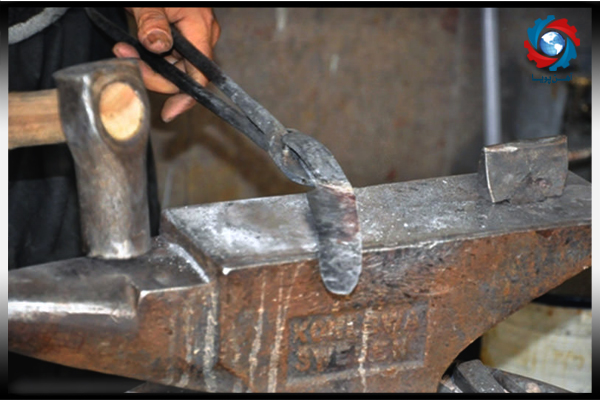
The Spedej ancient site located in 25 km of Zabol city , has more than 3000 years old and consists of two ancient graveyards . A short time ago in the investigations of experts from the Sistan va Baluchestan province in the area of Spedej , two metal melting furnaces were discovered in the vicinity of all the tools and devices specialized in the metal industry .
The Spedej inhabitants prospered their metalworking using these tools and exported their products to other parts too . Along with these melting furnaces , copper ores were also seen , which shows that the rock were brought from other parts to Spedej to make special goods . In the vicinity of these furnaces , some devices and molds of cooling molten metals were found including daggers , arrows and other tools of copper and bronze .
The archaeologists found bronze objects in the study , the length and width of which were only 3 centimeters , showing the figures of animal figures . In the examination of the bronze objects of these very small figures , archaeologists showed that the instruments of the Spedej inhabitants were very precise and delicate , and they knew the art of copper working and bronze working in the history of metallurgy .
Investigations into the ancient site of Spedej , led the archeologists to a tomb in which the artist was sleeping with all his instruments . These tools were including flags , a bronze ladle and grindstone as well as the water vessels for freezing copper and bronze . These tools show that metalworking in Spedej is represented in its best form and the people of this area have been familiar with this knowledge .
The objects inside the grave claim that three thousand years ago in Spedej , the art of metalworking was in its highest point of progress . Along with these items , the bronze figure of a dog has been found , which is only one cm long .
The existence of the bronze statue again confirms that metalworking tools were very detailed in more than three thousand years ago and small vessels and sculptures could be made with them . Evidence shows that the artistic objects has been offered to other parts of the country and other ancient civilizations .
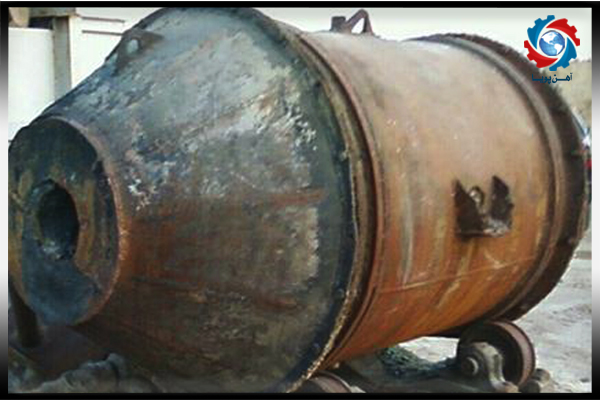
Jiroft sites are located near Kerman province . About 80 metalworking sites and 15 ancient mines are located in the north of jiroft and in mountains of Lalezar , in which copper , iron and lead were extracted . Jiroft is identified as one of the most important industrial and metalworking sites of ancient Iran .
In excavations of Qabristan hill in Qazvin two copper melting workshops along with several types of molds as well as copper ores were discovered . Qabristan hill inhabitants lived in one , two or three room houses . Among the houses , some pottery and metalworking workshops were also found .
But the greatest work of architecture is a vast building with thick walls and a central court and nine rooms , most likely to represent a kind of government or administration in the middle of the fifth millennium BC. in the central plateau of Iran .
The discovery of two metal - mining furnaces is a result of archaeologists discoveries in Yazd . They are likely to belong these furnaces to the first millennium BC. Shadadi holes were in the place of extraction and melting of metals such as copper and zinc . There were lots of these holes in Yazd province .
The first signs of the melting metal of the Iron Age in Iran were found in the Qoli-darvish historical site . The Qoli-darvish historical site , is of particular importance as the only site discovered from the people of the Iron Age ( 1800 to 550 BC ). Until now , the only information from these people was only subject to historic graves found on the Iranian Central Plateau .
The exploration of the Qoli-darvish site made it possible for archaeologists to study the sites of settlement of the people from age of iron , including architecture , craftsmanship , and the conditions of their social life .
The second stage of exploring the Qoli-darvish historical site has led to discovery of a metal melting furnace , which archaeologists have said that it was the first furnace discovered from people of the Iron Age .
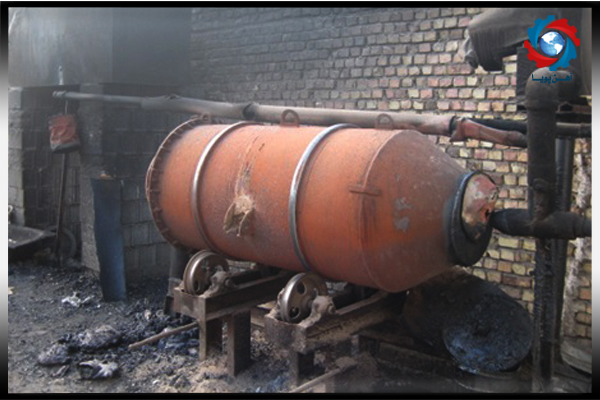
Experts have been able to identify various metal devices by exploring and excavating the Persepolis and the archaeological sites surrounding it .
The archaeological findings of metals in Persepolis reveal that the inhabitants and artisans of the region , have enjoyed a very high place in the material engineering over 2500 years ago , which is of paramount importance to the identification of engineering and the thought that lies in this engineering .
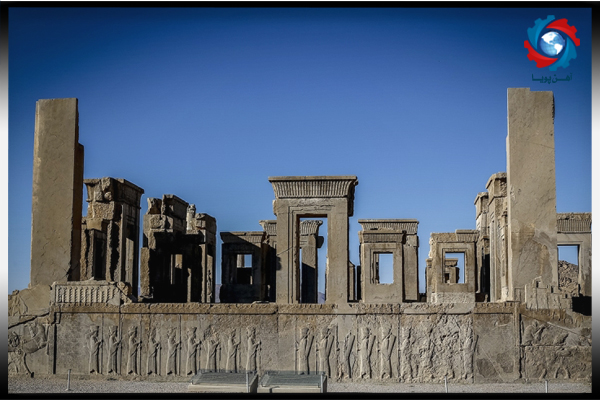
In metallurgy up to 500 BC , considerable technological advancements in mining and recovery of minerals were carried out , progress that was particularly linked by the beginning of scientific studies in metallurgy .
By this time rich silver mines containing lead had been mined in Greek , which reached a few hundred yards deep . It was one of the most important metallurgy developments in Greece by gaining silver and lead from those mines , which were more of sulfide .
Making gold and silver from Electrum natural alloy , was one of the most important events in this period . Over the course of a thousand years , between 500 BC and 1500 , the man made many scientific discoveries which were of great importance .
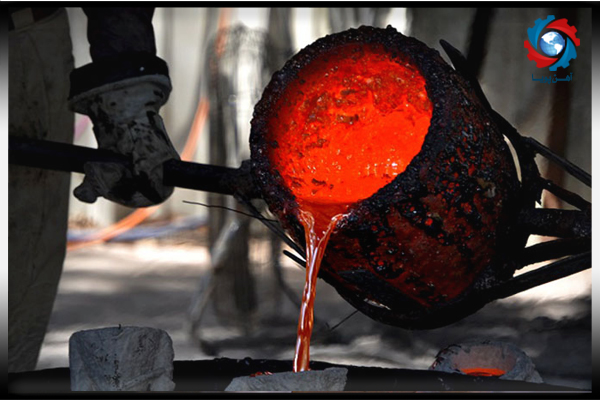
For example , the Greek inventor and mathematician Archimedes revealed that it was possible to determine the purity of gold by measuring the weight of gold and the weight of the water displaced by sinking it in water , by determining its density . In the first half of the millennium , the first major steel production started in India using the way the ancient Egyptians knew already .
This method is called the Vutes process , and the product is sponge steel . Steel is an iron that contains 2 % carbon . Arsenic , zinc , antimony and nickel were known from very far away times . Lead also was a well - known metal , through which they made sheets and pipes . Lead pipes were used in irrigation networks . Tin were used by Romans to cover food .
During the first centuries , many scientists called the alchemist claimed that they could transform an element into another element .
However , they failed to reach their target , but alchemists ' efforts helped to better understand the metals and their compounds , and found the basis of modern chemistry .
Since the 6th century AD and 3500 thousand years later , the most important innovation in metallurgy was in the field of iron and steel metallurgy . The first useful use of iron from medieval furnaces was not for steel , but for the manufacture of cast iron . Cast iron is an alloy of iron with about two or four percent carbon . The ability of casting cast iron is much better than steel .
During 16th century , the science of metallurgy developed significantly by publishing books in different fields of metallurgy . Among these books , three of them has significant importance and validity . Vatuccio Beringo has published the first book in 1540 . He has argued the melting of metals , gold separation from silver and production of pipes and shells .
His book was the first book written with the scientific method of casting . The next book was written by Gorgis Agricola , the German scientist . His specialty was the extractive metallurgy . In his book he argued about the grinding and concentrating processes of ores , the exact methods of determining the grade of ores to make decisions about the economic value of their extraction and melting metals and refining them .
The third book was written in 1754 by Lazarus Arker in German discussing about minerals and ores , refining metals and producing iron sulfide and sodium nitrate . By publishing these three books and the advancement of research methods , it was more scientific to deal with the issues related to metallurgy .
From 1500 AD to the mid – 19th century , the growth of metallurgy was focused on the technologies of iron and steel production . It was during this time that coke came into the metallurgy industry . The coke is made by heating coal or wood or in the absence of air . Coke is the fuel that is more productive compared to coal . The discovery of possibility of turning coal into coke in 1709 , brought a revolution in iron and steel metallurgy industries .
From the ancient times , there have been a total of 87 metals found among which , 2 in the medieval , 15 in the 18th century , 43 in 19th century and 20 in the 20th century . And seven of them was found in ancient times .
Of course , there is a long time between the discovery time of metals and when the production of metals is economical . Since in the study of metallurgy , not only metal production is important , but its usage must also be justified . For example uranium industrial production began about a century after its discovery , when the phenomenon of nuclear fission was under favorable use .
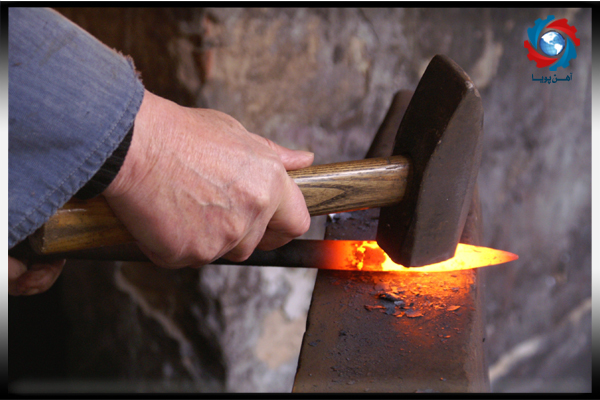
Apart from various metals , other factors also developed metallurgy . The following item has significant importance in developing metallurgy :
- The invention of modern techniques for extracting metals .
- Completion and construction of metal - producing furnaces .
- Various studies and discoveries in the fields of geology , mining , chemistry , physics , thermodynamics , and other theoretical and practical sciences
- Various innovations in the fields of metals including the methods of electrolysis , spectroscopy , and discovery of radioactivity .
- The discovery of atomic energy .
- The development of air industry , which led to the concentration of titanium metal .
- The discovery of semiconductors .
- Modern methods in physical metallurgy .

Ahan Pouya with more than a decade of best-selling experience, adheres to professional and ethical principles in the field of selling and buying at inside and outside the borders of Iran, helping you in the steel industry.